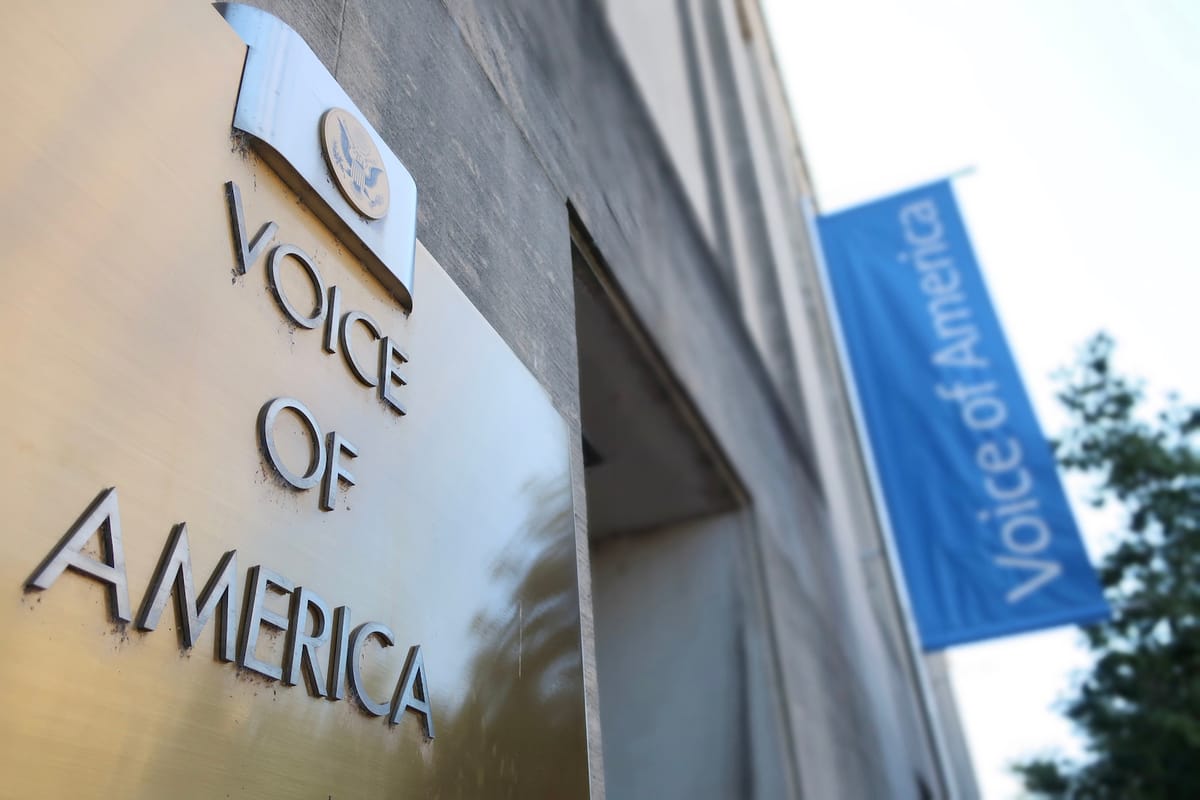

Court Steps In to Halt Abrupt Closure
A federal judge in New York issued a temporary restraining order on March 28, 2025, stopping the Trump administration from dismantling Voice of America, a taxpayer-funded broadcaster with an 83-year history. The ruling came after the U.S. Agency for Global Media, which oversees the outlet, placed 1,200 employees on paid leave and shuttered operations on March 15. This followed an executive order from President Donald Trump on March 14, aimed at slashing funds to the agency as part of a broader effort to reduce federal spending. The judge’s decision keeps the staff employed while courts assess the legality of the move, spotlighting tensions over government authority and fiscal priorities.
Roots of the Shutdown Push
The administration’s move stemmed from a March 14 executive order targeting the U.S. Agency for Global Media and six other federal entities. The White House labeled Voice of America as inefficient, arguing that its $257 million annual budget—part of the agency’s nearly $860 million allocation for 2025—burdened taxpayers. On March 16, special adviser Kari Lake declared the agency ‘not salvageable,’ citing its contracts with major news outlets like AP and Reuters, which were cut on March 14. The administration sought to redirect resources, claiming the broadcaster’s global reach duplicated private-sector efforts at public expense.
Legal Battle Unfolds
Voice of America employees and their unions filed a lawsuit on March 21 against the agency, its acting director Victor Morales, and Kari Lake. They argued the shutdown violated federal law and undermined the separation of powers by overriding Congress’s funding authority. Judge J. Paul Oetken of the Southern District of New York agreed to pause the closure, ruling that employees cannot be terminated until the court resolves whether the action breaches constitutional or administrative statutes. The order does not mandate resumed broadcasts but ensures the agency’s infrastructure remains intact during litigation.
Taxpayer Dollars at Stake
The U.S. Agency for Global Media’s budget, funded through congressional appropriations, supports Voice of America’s operations in nearly 50 languages, reaching over 350 million people weekly. The administration’s critique centers on cost, with the White House asserting that taxpayers should not foot the bill for a service it deems redundant. Social Media posts echoed this sentiment. The agency’s 2025 funding, already approved, underscores the legal hurdle to defunding without legislative consent.
Parallel Rulings Amplify Impact
The Voice of America case mirrors a similar judicial win for Radio Free Europe/Radio Liberty, another U.S.-funded broadcaster. Earlier in the week, a Washington, D.C. judge blocked its funding freeze, forcing the administration to restore support. These twin rulings signal a broader judicial pushback against rapid agency dismantling. In Texas and Louisiana, courts have upheld limits on federal spending, suggesting a mixed legal landscape as states and judges grapple with executive overreach versus fiscal restraint.
A Question of Government Scope
The shutdown attempt reflects a deeper debate over the role of government-funded media. The administration argues that private broadcasters can fill the gap, freeing up funds for domestic priorities amid a national debt exceeding $34 trillion. Voice of America’s defenders, however, point to its statutory mission, enshrined since 1942, to deliver factual reporting where free press is scarce. The court’s intervention keeps this tension alive, with a final ruling potentially reshaping how taxpayer money aligns with federal mandates.
Next Steps in the Fight
With the restraining order in place, the case heads toward a full hearing, likely stretching into mid-2025. The administration has resumed funding for other affected outlets following court orders, hinting at compliance under pressure. Yet the underlying goal—shrinking federal footprints—remains, as does the judiciary’s role in checking that ambition. For now, Voice of America’s fate hangs on whether courts prioritize congressional intent over executive cost-cutting, a decision that will echo through budget battles ahead.
Dues are $12 per year. Member benefits:
✅ Ad-Free Website Viewing
✅ Advocacy for Republican Seniors
✅ 120+ Senior Discounts
✅ Member Only Newsletters